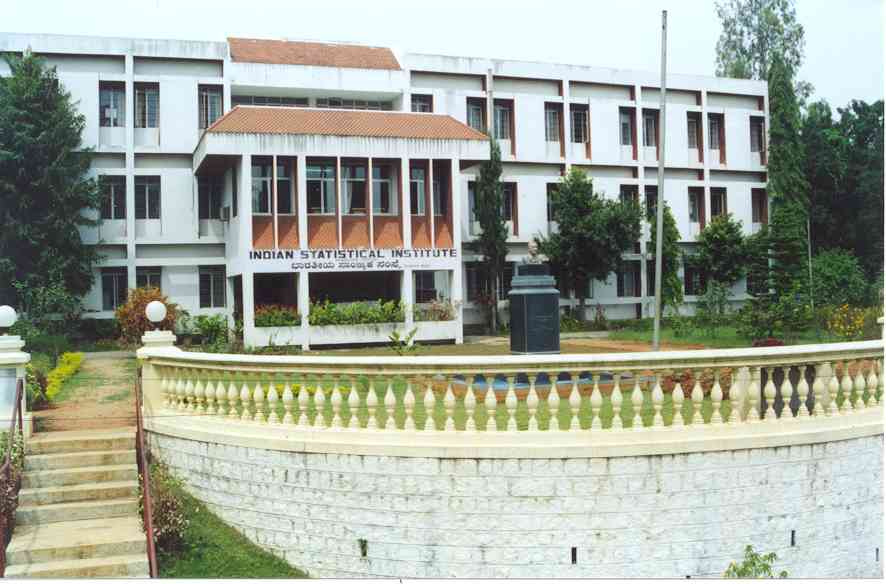 |
Bangalore Probability Seminar 2014 |

|
Past lectures in this year2015 or 2014 or 2013 or 2012 or 2011 or 2010 or 2009 or Prior to 2009 |
Upcoming talks |
11 Jan |
2:00-3:00 PM |
Metastability for interacting particle systems. |
This is the 2016 P. C. Mahalanobis lecture |
|
Metastability is the phenomenon where a system, under the influence of a stochastic dynamics, moves between different subregions of its state space on different time scales. Metastability is encountered in a wide variety of stochastic systems. The challenge is to devise realistic models and to explain the experimentally observed universality that is displayed by metastable systems, both qualitatively and quantitatively.
In statistical physics, metastability is the dynamical manifestation of a first-order phase transition. In this talk I give a brief historical account of metastability in this context. After that I describe the metastable behaviour of one particular model, namely, the Widom-Rowlinson model on a two-dimensional torus subject to a Metropolis stochastic dynamics. In this model, particles are randomly created and annihilated inside the torus as if the outside of the torus were an infinite reservoir with a given chemical potential. The particles are viewed as points carrying disks, and the energy of a particle configuration is equal to the volume of the union of the disks, called the "halo" of the configuration. Consequently, the interaction between the particles is attractive. We are interested in the metastable behaviour at low temperature when the chemical potential is supercritical. In particular, we start with the empty torus and are interested in the first time when we reach the full torus, i.e., the torus is fully covered by disks. In order to achieve the transition from empty to full, the system needs to create a sufficiently large droplet of overlapping disks, which plays the role of a "critical droplet'' that triggers the crossover. In the limit as the temperature tends to zero, we compute the asymptotic scaling of the average crossover time, show that the crossover time divided by its average is exponentially distributed, and identify the size and the shape of the critical droplet. It turns out that the critical droplet exhibits "surface fluctuations", which need to be understood in order to obtain a fine estimate of the crossover time |
| 11 Jan | 3:15-4:15 PM | How does a charged polymer collapse? |
|
In this talk we consider an undirected polymer chain living on the one-dimensional integer lattice and carrying i.i.d. random charges. Each self-intersection of the polymer chain contributes an energy to the "interaction Hamiltonian" that is equal to the product of the charges of the two monomers that meet. The joint probability distribution for the polymer chain and the charges is given by the "Gibbs distribution" associated with the interaction Hamiltonian. We analyse the "free energy" per monomer in the limit as the length of the polymer chain tends to infinity.
We derive a spectral representation for the free energy and use this to show that there is a "critical curve" in the (charge bias, inverse temperature)-plane separating a ballistic phase from a subballistic phase. We show that the phase transition is first order, identify the scaling behaviour of the critical curve for small and for large charge bias, and also identify the scaling behaviour of the free energy for small charge bias and small inverse temperature. In addition, we prove a "large deviation principle" for the joint law of the empirical speed and the empirical charge, and derive a spectral representation for the associated "rate function". This in turn leads to a law of large numbers and a central limit theorem. Based on joint work with F. Caravenna (Padova), N. Petrelis (Nantes) and J. Poisat (Paris). |
| 13 and 14 Jan | 10-11 and 11:10-12:10 (on 13th) and 2-3 and 3:15-4:15 (on 14th) | Large deviations (a mini-course) |
|
Large deviation theory describes how stochastic processes may deviate
substantially from their typical behaviour. Such large deviations are
always done in "the least unlikely of all the unlikely ways". This fact
serves as a guiding principle that allows for a precise characterisation
of large deviations in many concrete examples.
This mini-course consists of two parts: PART I: A quick overview of the basic theory: (1) Large Deviation Principle (LDP), Varadhan's lemma, Bryc's lemma, Contraction Principle, Dawson-Gartner projective limit LDP, Gartner-Ellis theorem. (2) Cramer's theorem and Sanov's theorem for i.i.d. random variables, their extension to an LDP for the empirical process involving relative entropy. Extension to Markov processes. PART II: An application to drawing random words from random letter sequences: When we cut an i.i.d. sequence of letters into words according to an independent renewal process, we obtain an i.i.d. sequence of words. In the annealed LDP for the empirical process of words, the rate function is the specific relative entropy of the observed law of words w.r.t. the reference law of words. In this lecture, we consider the quenched LDP, i.e., we condition on a typical letter sequence. The rate function of the quenched LDP turns out to be a sum of two terms, one being the annealed rate function, the other being proportional to the specific relative entropy of the observed law of letters, obtained after a "randomised concatenation'' of words, w.r.t. the reference law of letters. The proportionality constant turns out to be equal to the tail exponent of the renewal process. |